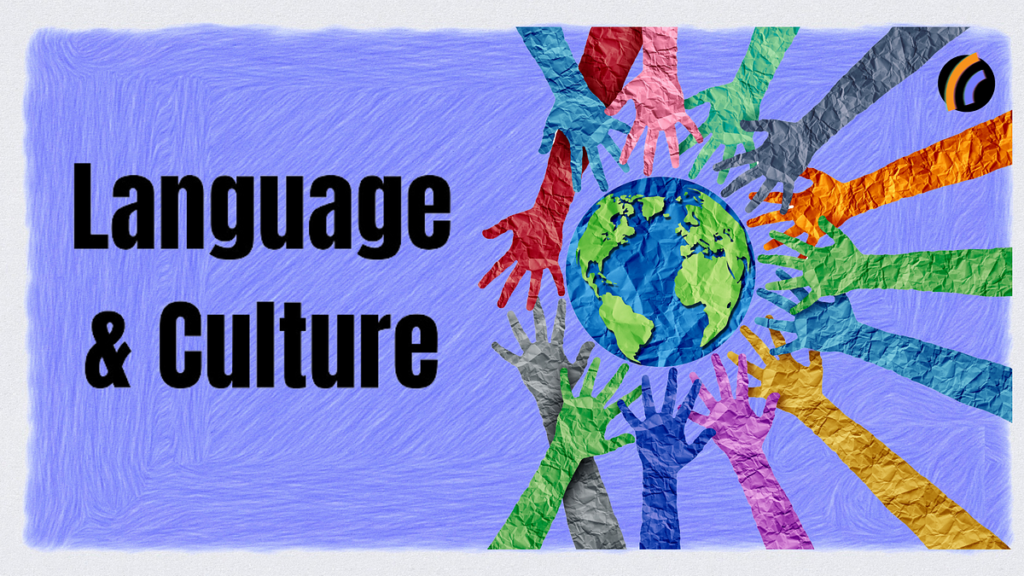Accessing quality education and health care is a vital need and a human right for everyone, especially for immigrants who face many challenges and opportunities in their host country.
Education and health care are essential for improving well-being, skills, and prospects.
However, immigrants often encounter various barriers and difficulties in accessing quality education and healthcare services, such as language, culture, cost, availability, and discrimination.
This article provides tips and advice for immigrants who want to access quality education and health care for themselves and their families in their host country.
Read on to learn more:
1. Know Your Rights and Responsibilities as an Immigrant

One of the first steps to accessing quality education and health care as an immigrant is to learn about your rights and eligibility for these services in your host country.
Depending on your immigration status, you may have different options and opportunities for enrolling in public or private health insurance plans, accessing low-cost or free health care services, and applying for financial aid or scholarships for education and training programs.
You may also face different challenges and risks, such as discrimination, deportation, or denial of services.
Therefore, educating yourself about the laws, policies, and programs that affect your access to education and health care in your host country is important.
You can find reliable sources of information and support from various organizations. Knowing your rights and eligibility allows you to make informed decisions and protect yourself and your family.
2. Find Reliable Sources of Information and Support for Immigrants

Finding reliable sources of information and support for education and healthcare options and opportunities is crucial for immigrants who want to access quality services and programs in their host country.
Many online and offline resources can provide useful and accurate information and guidance for immigrants on various topics, such as health insurance, health care services, education and training programs, scholarships, and financial aid.
These resources can help immigrants learn about their rights and eligibility, find culturally and linguistically appropriate providers and programs, and access low-cost or free services and assistance.
Immigrants can make informed and empowered decisions about their education and healthcare needs and goals using these resources.
3. Choose the Best Education Options for Yourself and Your Children

Choosing the best education options for yourself and your children is important for immigrants pursuing their academic and career goals in the U.S.
There are many factors to consider, such as the quality, cost, and availability of different types of schools and programs.
Here are some tips to help you make an informed choice:
1. Explore the public school system in your area
Public schools are free and open to all children, regardless of immigration status.
They offer a variety of programs and services, such as English language learning, special education, gifted and talented education, and extracurricular activities.
You can find information about public schools in your district on their websites or by contacting them directly.
2. Consider private school options
Private schools are independent of the public school system and charge tuition fees.
They may offer different curricula, teaching methods, religious affiliations, or specialized programs.
Some private schools may also offer scholarships or financial aid to eligible students.
3. Look into alternative education options
Alternative education options are non-traditional ways of learning that suit your needs and preferences better than conventional schools.
Some examples of alternative education options are homeschooling, online learning, charter schools, magnet schools, and dual enrollment programs.
These options may have different requirements, benefits, and challenges, so research and consult your local education authorities before choosing them.
4. Seek guidance and support
Choosing the best education options for yourself and your children can be overwhelming, especially if you are new to the U.S. education system.
You can seek guidance and support from various sources, such as school counsellors, teachers, mentors, community organizations, or online resources.
4. Access Affordable and Quality Health Care Services and Insurance

Accessing affordable and quality healthcare services and insurance is vital for immigrants who want to protect their health and well-being in the U.S.
There are many challenges and barriers that immigrants may face, such as language, culture, cost, eligibility, and availability of different types of health care and insurance options.
Here are some tips to help you access the health care and insurance that you and your family deserve:
1. Know your rights and options as an immigrant
Depending on your immigration status, you may be eligible for different health coverage and benefits, such as Medicaid, Medicare, Children’s Health Insurance Program (CHIP), or Marketplace plans.
2. Compare and choose the best health plan for your needs and budget
You can shop for health plans, comparing them based on their costs, benefits, and quality ratings.
Depending on your income and household size, you may qualify for premium tax credits and other savings on Marketplace plans.
3. Seek low-cost or free healthcare services and programs in your community
If you are uninsured or underinsured, you can still access healthcare services and programs that are low-cost or free, such as community health centres, free clinics, public health departments, or charitable organizations.
4. Learn about preventive care and wellness programs
Preventive care and wellness programs are services and activities that can help you prevent or manage common health problems, such as diabetes, hypertension, obesity, or mental health issues.
These services and programs may include screenings, vaccinations, counselling, education, or lifestyle interventions.
Your health plan may cover some of these services and programs at no or low cost, or you may be able to access them through your employer, school, or community.
5. Learn the Language and Culture of Your New Country

Learning the language and culture of your new country is a great way to enrich your experience as an immigrant.
Language and culture are closely related; by understanding both, you can communicate more effectively and appreciate the diversity of your new environment.
Here are some tips to help you learn the language and culture of your new country:
1. Learn the language with a native speaker
The best way to learn a language is to practice it with someone who speaks it fluently and naturally.
You can find a language partner online, join a language exchange program, or take a language course with a native teacher.
You will improve your vocabulary, grammar, and pronunciation and learn about your new country’s culture, customs, and idioms.
2. Get festive for the holidays
Every culture celebrates holidays differently, and participating in them can help you learn more about your new country’s history, traditions, and values.
You can research the meaning and origin of the holidays, join the local festivities, or host your celebration with your friends and family.
You can also learn about the food, music, and art associated with the holidays and try to make or enjoy some of them yourself.
3. Try new food
Food is an essential part of any culture, and trying new food can help you discover your new country’s flavours, ingredients, and techniques.
You can visit local restaurants, markets, or street vendors and sample various dishes and snacks.
You can also learn to cook recipes and invite your neighbours or coworkers to share a meal.
You will satisfy your taste buds and learn about your new country’s history, geography, and culture through its cuisine.
4. Be bold and ask questions
One of the best ways to learn about a different culture is to ask questions.
You can ask your language partner, teacher, friend, or colleague about anything that interests or confuses you about their culture.
You can also use online resources, such as or, to learn more about the language and culture of your new country.
You will gain more knowledge and show curiosity and respect for their culture.
5. Visit a museum
A museum is great for learning about your new country’s history, art, and culture.
You can explore the exhibits, read the captions, listen to the audio guides, or join a guided tour.
You can also watch documentaries, read books, or listen to podcasts about the topics that interest you.
You will enrich your mind and appreciate the heritage and diversity of your new country.
Also see: How to Deal With Limited Information and Guidance on Immigration Programs and Services
6. Seek Professional Help for Mental Health Issues and Trauma

Seeking professional help for mental health issues and trauma is a courageous and important step for immigrants who want to heal from their past and present experiences.
Mental health issues and trauma can affect anyone, regardless of their immigration status, and they can have serious consequences for your well-being, relationships, and integration.
7. Connect with Other Immigrants and Local Communities

Connecting with other immigrants and local communities is a good way to make friends, learn new skills, and feel more at home in your new country.
There are many ways to connect with other immigrants and local communities, such as:
1. Volunteering for a local organization serving immigrants or other causes you care about
Volunteering can help you meet new people, practice your language skills, and contribute to your community.
You can find an organization in your area seeking volunteers on websites like or.
2. You are participating in and attending local welcoming events
Local welcoming events celebrate the diversity and inclusion of immigrants in your community.
They can include festivals, concerts, workshops, or cultural exchanges.
You can sign up for newsletters of immigration legal service providers in your community to stay updated on community events promoting immigrant inclusion.
3. You are joining a sports team, association, or social club
Sports teams, associations, or social clubs are groups of people with common interests or hobbies.
They can help you have fun, stay healthy, and make friends with people who have similar passions.
4. You visit a community centre, recreation centre, or library
Community centres, recreation centres, or libraries are public places that offer various programs and services for people of all ages and backgrounds.
They can help you access information, education, entertainment, and support.
5. You are attending a place of worship
A place of worship is a building or location where people practice their religion or faith.
It can help you connect with your spirituality, find comfort, and meet people who share your beliefs.
8. Advocate for Yourself and Your Family in Education and Health Care Settings

Advocating for yourself and your family in education and healthcare settings ensures that you and your loved ones receive the best possible services and support for your needs and preferences.
Advocating can involve communicating effectively, asking questions, seeking information, expressing concerns, and making decisions.
Here are some tips to help you advocate for yourself and your family in education and healthcare settings:
1. Know your rights and responsibilities as a patient, student, or parent
You have the right to be treated with respect, dignity, and fairness in any education or healthcare setting.
You also have the right to access quality services and programs, to receive clear and accurate information, to participate in decision-making, and to provide feedback or complaints.
You also have some responsibilities, such as providing relevant information, following agreed-upon plans, and respecting the rights of others.
You can learn more about your rights and responsibilities on websites like or.
2. Prepare for your appointments or meetings
Before you go to an appointment or meeting, preparing some questions, concerns, or goals you want to discuss is helpful.
You can also bring any documents, records, or notes that are relevant to your situation.
You can use online tools, such as or, to help you prepare for your appointments or meetings.
3. Speak up and ask questions
During your appointments or meetings, it is important to speak up and ask questions if you do not understand something, needs more information, or have a different opinion.
You can also ask for clarification, examples, or alternatives.
You can use phrases such as “Can you explain that in a different way?”, “What are the pros and cons of this option?” or “Is there another way to do this?” to help you communicate effectively.
4. Seek support and advice
Sometimes, you may need support and advice from others to help you advocate for yourself and your family.
You can seek support and advice from your friends, family, or community members with similar experiences or expertise.
You can also seek support and advice from professionals, such as counsellors, social workers, advocates, or lawyers, who can provide guidance, information, or representation.
You can find support and advice in your area on websites, such as or.
5. Follow up and evaluate
After your appointments or meetings, following up and evaluating the outcomes and actions is important.
You can follow up by sending a thank-you note, confirming the next steps, or requesting a discussion summary.
You can also evaluate by reflecting on what went well, what did not, and what you can do differently next time.
You can use online tools, such as or, to help you follow up and evaluate.
9. Plan for Your Future Education and Health Care Needs

Planning for future education and healthcare needs is crucial, especially for immigrants facing unique challenges.
Here are some steps to consider:
- Familiarize yourself with your new country’s education and healthcare systems. Resources like the World Health Organization and local immigrant support organizations can provide valuable information.
- Consider the educational goals for yourself and your children and any specific healthcare requirements your family may have.
- Education and health care can be significant expenses. Plan your finances to accommodate these costs through savings, insurance, or assistance programs.
- Look for scholarships, grants, and other funding options to help cover education costs.
- Learn about your rights to health care and the services available to immigrants, as outlined by international law and local policies.
- Policies and services can change, so staying updated on any developments affecting your access to education and health care is important.
- Connect with other immigrants and community groups who can offer support and advice and share their experiences.
- There’s a language difference; consider language classes for better communication with educational institutions and health care providers.
- Maintain an organized file of all important documents related to your education and health care for easy access when needed.
- Have a contingency plan for unexpected healthcare needs or educational disruptions.
Conclusion
Navigating the complexities of education and healthcare systems in a new country can be challenging for immigrants.
However, with the right information and resources, they can access quality education and healthcare for themselves and their families.
This guide provides practical tips to help immigrants overcome these challenges.
Together, education and health care form a foundation that enables you to not just survive but thrive in your new home.
Embrace the journey, and remember that every step you take is towards a brighter future for you and your family.
Good luck!
Frequently Asked Questions
1. What are some strategies for supporting immigrant students?
Schools can help by creating a welcoming environment, communicating in families’ preferred languages, understanding immigration policies, connecting families with resources, and understanding the impacts of stress, anxiety, and trauma.
2. How can immigrant students perform better at school?
The performance of immigrant students is strongly related to the characteristics of the school systems in their host country.
3. What are some ways to improve health care for immigrants?
Providing a welcoming environment, addressing physical and social needs, understanding their migration history, and being culturally sensitive are ways to improve immigrants’ health care.
4. What rights do undocumented immigrants have in accessing healthcare services?
Undocumented immigrants have the right to receive emergency medical care, regardless of their immigration status.
5. What healthcare coverage is available for undocumented immigrants?
Some states offer emergency Medicaid and other healthcare programs for undocumented immigrants who meet specific criteria.
6. What healthcare services can undocumented immigrants access?
Undocumented immigrants can access healthcare services through community clinics and Federally Qualified Health Centers (FQHCs), which offer affordable or free medical care based on income.
7. How can schools help immigrant families?
Schools can help by keeping emergency contact information updated, ensuring all staff understand immigrant students’ rights, and creating different channels for communication in families’ languages.
8. What are some challenges faced by immigrants in accessing healthcare?
Fear of deportation, limited financial resources, and lack of knowledge about available resources are some of the significant challenges faced by immigrants.
9. What are some ways to improve the health sector’s response to immigrants?
Strengthening the health sector’s response to gender-based violence in humanitarian emergencies, promoting the health of refugees and migrants during the COVID-19 pandemic, and setting evidence-informed norms and standards on refugee and migrant health are some ways.
10. What are some innovations for improving access to education for urban refugees?
There are various innovations for improving urban refugees’ access to education, but specific details are unavailable.